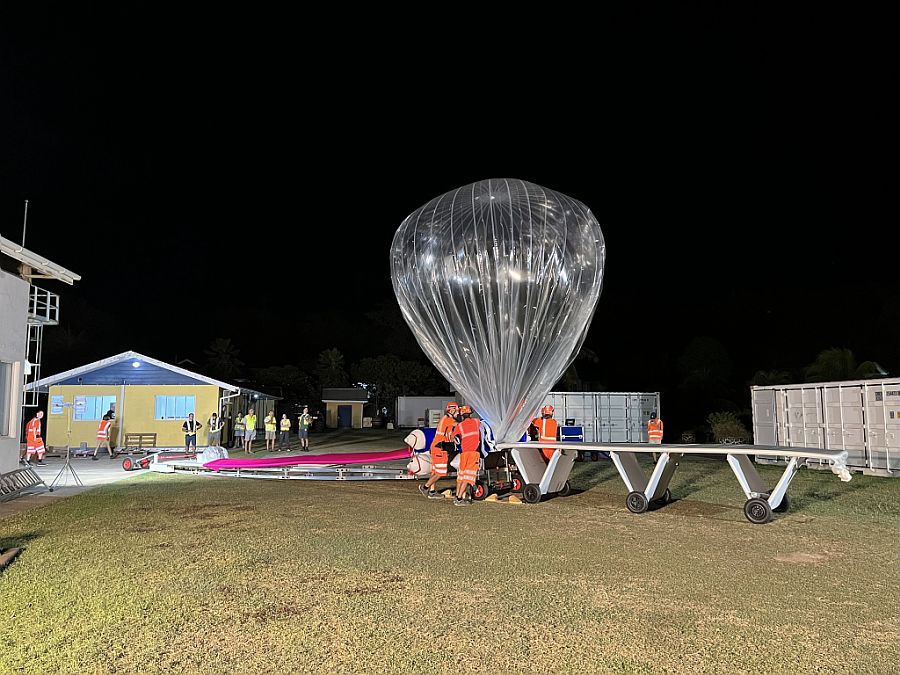
The ISAE-SUPAERO team releasing a pressurized balloon, as part of their Strateole-2 project. These balloons have sensors on board capable of detecting large earthquakes from thousands of kilometers away, as reported in a new study in Geophysical Research Letters. Credit: CNES/SABLON Igor, 2021.

A balloon hangs above the mountains, waiting for waves of infrasound generated by an earthquake to hit. Here, those waves are approximately visualized by the gray dots. Credit: CNES/Raphael Garcia.
Vivacious Venus
As part of the decade of Venus, several teams are working on balloon-based seismic monitoring, but the new study is the first to successfully capture large, natural quakes with multiple balloons, Garcia says.
"The search for detecting a big quake on stratospheric balloons, it's a bit competitive," he says. "But it's a nice competition, because in the end, we're working to demonstrate the same concept." Still, he is pleased their team nabbed this accomplishment. The proposal for balloon-based seismic monitoring on Venus, called Phantom, will be submitted to the New Frontiers NASA missions in collaboration with JPL-NASA and North Carolina State University.
The network's success also highlights the potential for balloon-based seismic monitoring to complement areas that are difficult to monitor with a ground-based network, such as the sea floor. The balloons could also be deployed as a rapid-response tool for monitoring aftershocks.






